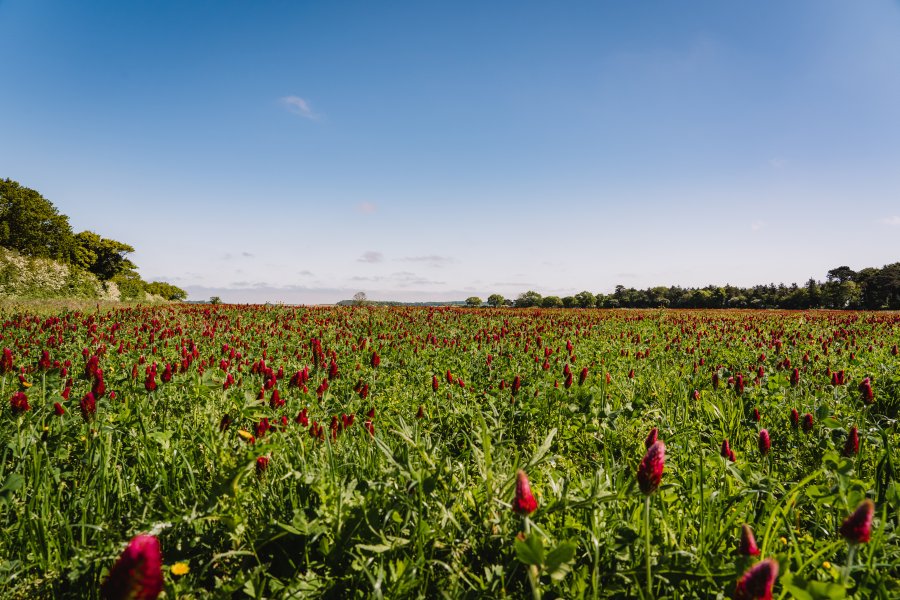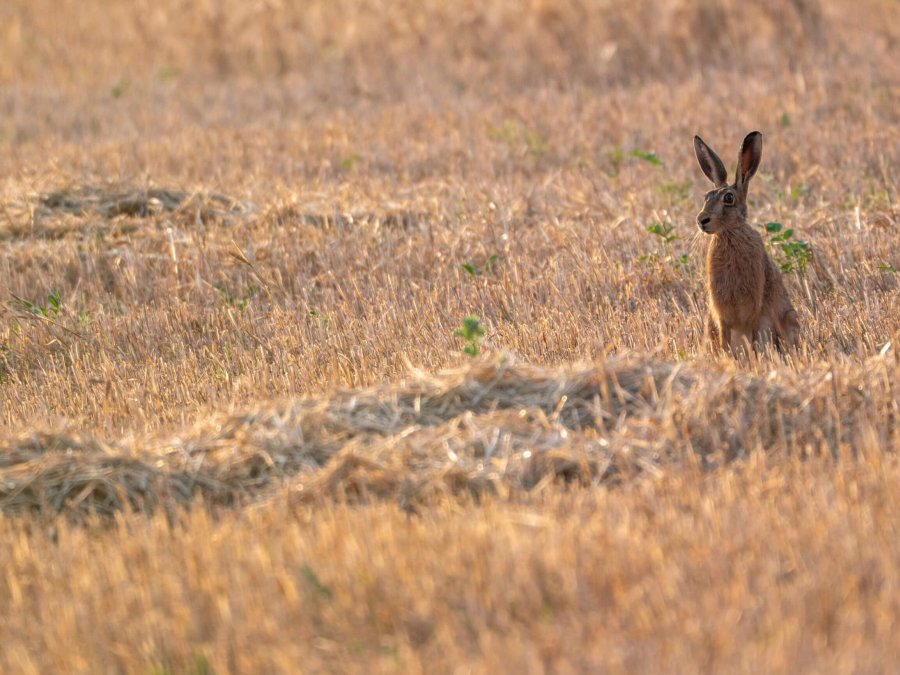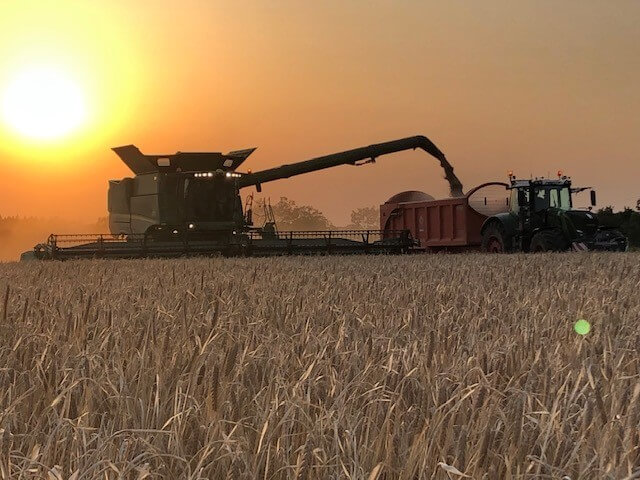
The Ken Hill Estate has been using regenerative farming techniques in a bid to both benefit the environment and prepare for future agricultural policy.
Regenerative agriculture has become increasingly popular on farms across the country over the last five years.
And whilst some farmers remain sceptical of its methods, many have wholeheartedly bought into it.
The approach is not specific to each and every farm, but is instead focused on working in line with several key principles.
These include minimising soil disturbance, keeping the soil covered, maximising plant diversity, and integrating livestock.
At the Ken Hill Estate on the West Norfolk coast a regenerative approach is showing signs of success.
As well as being home to a significant arable setup, the 4,000 acre estate is also covered by large areas of woodland and marshland.
The estate has been in Dominic Buscall’s family for more than 150 years, he told us that they have long seen the environment as a priority.
“For around 30 years prior to this project the farm had a sympathetic, nature friendly approach, although in those years we were still performing traditional cultivations," he said.
Wild Ken Hill
In 2018 they decided to set up the ‘Wild Ken Hill’ project with the aim of farming more sustainably and creating a more nature friendly environment on the estate, part of which was a switch to regenerative agriculture.
Dominic said there were two main drivers behind the move: “One we are trying to do more for the environment.
"We think that private landowners have the power and the responsibility to address biodiversity and climate crises, so we think this project is the right thing to do.”
He continued: “The second reason for the change was Brexit and the phasing out of the Single Farm Payment.
"As a good chunk of our soils are marginal, we took an early decision to take our poorest land out of arable production because in 10 years it is likely to be unprofitable.”
Regenerative farming
This meant that the make up of the farm changed. Around 500 acres of arable land was taken out of production and paired with 500 acres of woodland to create a rewilding area.
Around another 1,000 acres of the estate is woodland, marsh, and hedgerows, meaning that roughly half the land is in arable production.

Dominic said: “That land we are farming in a truly regenerative manner, it is great for nature and the soils are regenerating properly.
"We are trying to be as innovative as we can, combining strip till and RTK farming to reduce soil disturbance, and using weather stations to ensure we only spray when necessary and in optimal conditions.”
He added: “Within the farm, most of the land that has been taken out of arable production are the corners of fields, so we are minimising the amount of short work we do and farming much more efficiently on the remaining area.”
Ken Hill is still running a typical arable rotation for North West Norfolk soils: winter wheat, winter and spring barley, oilseed rape, and sugar beet, which is gradually being reduced within the rotation.
However, the emphasis is changing towards an increased proportion of spring cropping, as large parts of the farm see cover crops sown directly after harvest to protect soils and build fertility over the autumn-winter period.
“We are taking sugar beet out of the rotation because we do not believe root crops are truly compatible with a regenerative approach – there is just too much soil disturbance.
"We no longer own a plough and do almost all of our crop establishment directly into grazed cover crops or the previous year’s crop residue, minimising disturbance to soil structure," he said.
Livestock are also kept on some of the land that has been taken out of arable production: “We have 40 head of Red Poll cattle, as well as 20 Exmoor ponies and 4 Tamworth pigs in the rewilding area.
"We also have tenanted grazing on some of our freshwater marshes and our neighbour’s sheep graze our cover crops.”
Intercropping
The move to regenerative farming has also seen monocultures replaced with intercropping.
“We have trialled intercropping Spring Barley and Peas as well as Spring Oats and Peas; this year we are looking at winter-planted poly-crops," Dominic said.
“We have been able to make huge reductions in fertilisers and sprays applied to these crops, applying none at all in the spring, whilst suffering only a small yield penalty versus our neighbours, so the gross margin without synthetics is quite impressive.”
Inputs
Alongside intercropping, a move into strip tilling is also allowing reductions on inputs: “With the strip till we are cultivating 2 metres in every 6," he said.

"Amongst other benefits, the lower levels of soil disturbance reduces the weed burden and allows us to cut herbicides too”.
The same is true of the weather stations installed around the farm: “Computer programmes analysing the weather data show us that we only need to spray fungicides under certain weather patterns, not to a schedule.
"In 2020, the only fungicide we sprayed was as part of an internal trial”, Dominic added.
“Of course, one of the biggest benefits has been the reduction in fixed costs, our per hectare labour, power, and machinery costs have nearly halved over the last couple of years."
Clear results
Dominic said that they have already seen clear changes around the farm since they began the project.
“When you walk through the farm it feels like you are in a nature reserve, but at the same time lots of food is being produced here”, he said.
“The soils are already showing better earthworm counts and improved drainage. It is hard to judge yield performance over just two years, but our margins have increased considerably.
"We have saved not only on inputs, but also huge amounts on fixed costs. In the first year we saved around £80k in diesel and plough metal alone.”
Dominic believes that regenerative farming methods can be used elsewhere: “The principles of regenerative farming have the potential to be applied in any context, however I do think that it is most cost-effective on average soils like ours.
"I am not sure that will always be the case on some of the most fertile land.”
He also said that whilst Ken Hill has set up a rewilding project, rewilding is not a land management approach that can necessarily be used anywhere.
“We have got to do these things in the right places – marginal land and areas that can improve connectivity - because we still need to grow food.
"At Ken Hill we are looking after nature and the environment, but this is still a commercial farm."
As part of the Wild Ken Hill project, they have been trying to focus on education and engagement, with large numbers of school children, land managers, and farmers having visited the site.
Dominic said: “It is a really important strand of what we are trying to do. We do not want to preach to anyone, we just want to engage and create discussion.
"As farmers, we will all need to collaborate and learn from one another to succeed over the coming years."
Future
Dominic believes the steps they have taken at Ken Hill leave the Estate well prepared for future changes to agricultural policy.
He said that he feels positive about the way policy has been set out so far, but that he has some reservations.
“I am a believer in public money for public goods. In this country, I think we need to use land not only to grow food, but also to provide other benefits, including carbon sequestration and biodiversity.
“I like the direction of travel, but have some concerns about free trade. Farmers are going to either have to scale up or specialise to compete with some of these markets and I think many could struggle to do so."
He believes that it is essential the government get the delivery of the Environmental Land Management (ELM) scheme right.
“I think the philosophy of ELM is a good step, but at the moment there is a big question mark around how that will actually look in practice."
